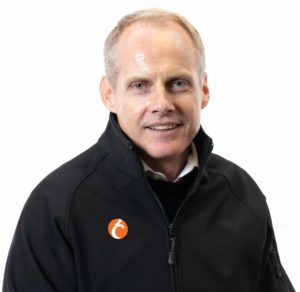By: Peter Todd, CEO, Constantia Group

You recently took up the reigns as group CEO at Constantia. How are you balancing the challenges as a new CEO of the group and the unprecedented challenges posed by COVID-19?
Taking over as CEO of any company invariably has its challenges. The unforeseen COVID-19 pandemic is now just another challenge I need to deal with. Fortunately, we established a COVID-19 Task Force early on and my team has responded amazingly well, so at an operational level it has not taken up too much of my time. This enabled me to focus on the more difficult task of forecasting what the effects of COVID-19 could be on our business and how we plan for this.
Adversity is an inseparable part of leadership. What is your general approach in dealing with unexpected challenges?
The most important thing is to remain calm. Assess the situation, gather as much data as you can and then get ready to make decisions. It is important to be decisive. One must accept that not every decision you make will be correct and that not every solution will be perfect. So, stay calm, make the best decision you can based on the available information and accept that not everything will go according to plan.
The operational leaders in a company are the ones who must execute on the strategic plans to get through a crisis. What is the most effective way to keep the operational team operating in unison while physically distanced?
Thank goodness for technology! By leveraging various technologies, we have been able to ensure open lines of communication remain. The key to effective communication is to ensure that it is frequent and consistent. This is especially true during a crisis where all staff are working remotely.
Keeping staff motivated during normal times is difficult enough. Did the skills that ensured success then assist you now and what did you have to change?
COVID-19 has created all sorts of uncertainty for people, both in terms of physical and financial well-being, fuelled by the many “dooms day” stories circulating. This presents a very real challenge for any leader. Again, communication is undoubtedly the key. The most important thing is to be open, honest and frequent with your communications to staff whether it is a positive or a negative message. Ensuring authentic communication with your staff working remotely can be a challenge. We have tried to keep people engaged by mixing up our communications – leveraging audio, video and written communication. I have also implemented a Q&A portal, where staff can ask me literally any question to ensure
I am present and accessible.
The unknown factor here is when will this (COVID-19) come to an end? How do you plan when the knowns are so limited?
The most important thing is to keep monitoring the situation, we analyse the data daily and look for lead indicators which may tell us what lies ahead. It’s important that we respond as soon as we become aware of a particular trend so that we stay ahead of the curve rather than get caught up in crisis management. The planning we do now is daily, and it is going to be like that until we get through the pandemic. It’s also critical to adjust ones plans and be flexible – there is no one plan that is going to see us through an evolving crisis.
Being the leader of any business can be a difficult job. D you have and tips/ learnings as to how you manage stress and are able to maintain a balanced lifestyle i.e. work, family, personal time etc.
Everybody has their own way of destressing. For me its always been around physical activity and exercise. The one positive thing about the Lockdown is that it has brought the work- life balance back into perspective. We have all experienced that Skype or Zoom call with screaming kids, barking dogs and embarrassing moments being exposed – an important reminder that we all have lives and responsibilities outside of work. Hopefully, one of the learnings from this crisis is that we start to give more focus to that work-life balance as we now know how effectively we can work from home.
Going forward, organisations should embrace these learnings and leverage the technologies so that a work-life balance becomes interwoven into the fabric of the organisation and not just something that we aspire to, yet never achieve.



